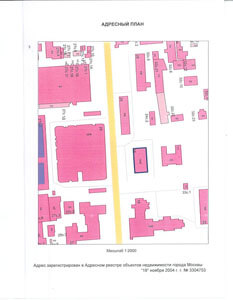Remodeling an apartment always involves not only time, but also financial costs. All this leads to the fact that citizens more often turn to specialized companies to obtain a project, so as not to pay state fees several times for incorrect documentation.
Home renovation
Redevelopment is a complex and responsible process. Obtaining a permit is an even more labor-intensive process than the repair itself. But not every action needs to be properly coordinated.
You can obtain permission yourself or engage a specialized company that will draw up a project for presentation to the government body - the housing inspection.
Hiring such a company will allow you to get rid of long queues and paperwork. But such an action is accompanied by additional financial costs.
Many people reassure themselves that there will be no new or strangers in the room, so no one will notice the violation in the form of redevelopment. But it is not so.
Such redevelopment becomes noticeable during a purchase and sale transaction. And this promises the owner a fine, since he violated the law.
This often occurs when a part is demolished load-bearing wall. Moreover, if the layout is incorrect, the structure of the house can be damaged. Therefore, it is worth obtaining a permit rather than then registering an already remodeled apartment.
But before remodeling, you need to study several nuances. Everything is specified in the technical passport.
This is considered a mandatory document containing technical and other information about a specific premises. This allows you to confirm that the apartment meets the established requirements.
How to apply?
Permission must be obtained after contacting a specialized company that has a license to perform project documentation.
After this, an appeal is made to the Housing Commission, where the correctness of the documentation is already revealed.
Once a person receives permission, repairs can begin.
4 months are allocated for the implementation of the plan. During this period of time, it is necessary to follow the plan and finally complete the work.
Any deviations from the sketch or plan will be considered an offense. And this threatens the owner with penalties. To approve the redevelopment, you need to invite an inspector from the Housing Inspectorate.
- Receive a certificate of work completed, which indicates compliance with the plan.
- Get a technical passport. To do this, contact the BTI with an old passport and a certificate of work performed.
- Obtaining a cadastral passport. All of the above documents are submitted to the Cadastral Chamber or a multifunctional center for entering information into the register.
- Obtain a new certificate of ownership. This is necessary when increasing or decreasing the square footage of the property.
Required documents
To obtain a permit, you must provide the following package of documents to the government agency:
- application of the established form;
- redevelopment project or sketch;
- title documents for real estate;
- written consent of all family members of the owner registered at the place where the permit was issued;
- in some cases permission from neighbors is required;
- real estate registration certificate.
The legislative framework
They discuss the issue regarding the cost of redevelopment and the Housing Code of Russia.
Additionally, there are concepts about planning and deadlines for making a decision.
How to legalize unauthorized reorganization?
has the following form:
- contacting a specialized company for a project;
- its approval by the MJAS, housing inspection, Sanpin, ZhEK and BTI;
- contacting the housing inspectorate to obtain a redevelopment registration document.
In this case, you will also have to pay a fine and return the premises to their proper appearance if it does not meet the requirements of the law. It will not be possible to sell real estate in this form.
How much does it cost to remodel an apartment?
Many citizens want to know how much it costs to remodel an apartment in 2017.
Remodeling an apartment is not a cheap business. Therefore, most often the final amount becomes a threshold of 40,000 rubles.
In BTI
You can find out how much it costs to redevelop an apartment in BTI by contacting the organization.
The owner turns there to resolve several issues. Each decision will require a specific price to be paid. This is the initial cost for the registration process. At the BTI, approval will cost a citizen 5,000 rubles.
To obtain new documents you will have to pay 2,000 rubles.
Coordination
- This is an integral point in resolving the issue. Appeals here are also made through the BTI. If the redevelopment has already been carried out, then you should contact the court. In this case, approval will cost several times more.
In Moscow and the region, approval can cost up to 20 thousand rubles if nuances arise in the design.
Project
The most expensive process is obtaining project documentation. When contacting BTI, the price for the service is 30 thousand rubles.
Other companies specializing in project design charge several times more. The price for the service directly depends on the work performed.
An additional amount will be charged for each job. For example, for changing the location of the door you need to pay 15,000 rubles. And the more complex the project documentation, the more expensive the project.
Many companies have a fixed amount. This becomes beneficial when implemented unusual design, which is difficult to design. It is much more profitable to contact the BTI if there is a standard list of works.
Additional expenses
In addition to the main costs, every citizen should understand that there are additional ones. For example:
- If you go through the court, you will have to pay 30,000 rubles. The cost consists of the state fee for a specific claim, preparation of supporting documentation and provision of services.
- Preparation of documentation for inspection by regulatory authorities - 30,000 rubles.
- For each consultation – 1000 rubles.
The figures presented above should be considered as averages. They depend on the specific region of circulation.
On average, redevelopment with work of average complexity takes no more than 150 thousand rubles.
If the redevelopment is initially completed and then legalized, you will have to pay an amount of 200 thousand rubles.
During unauthorized redevelopment, similar actions occur. But approval is made through the court.
It will be necessary to prove compliance with the rules of the SES and the Ministry of Emergency Situations of the redesigned premises. Moreover, the owner will have to pay a fine for the violation.
Video about the cost of registration
Technical Inventory Bureau (unitary enterprises, services, departments, centers, bureaus) are organizations that provide services to the population for the technical inventory of capital construction projects, as well as carrying out cadastral work, for the purpose of issuing a boundary plan, technical plan and appraisal activities for real estate objects . In the city of Moscow, New Moscow, there are several BTIs, each of which receives the population: Moscow City Bureau of Technical Inventory http://www.mosgorbti.ru/, Federal Bureau of Technical Inventory http://www.rosinv.ru/.
When approving the redevelopment, we will definitely need documents from the BTI - technical passport. It is worth noting that the approval of redevelopment begins and ends with a visit to the technical inventory office. The first time we come here is to order and receive technical certificate for an apartment, which is included in the package of documents required to obtain a Permit for Redevelopment. The BTI technical passport is the original graphic document on the basis of which a sketch or redevelopment project is developed.
 |
 |
 |
| Example of a technical passport for an apartment | ||
This is the second time we visit BTI in order to make changes to technical documents related to the approval of redevelopment. In fact, making changes to the BTI plan is the key and final point in approving the redevelopment, since it is precisely because of the replacement of the apartment or premises plan that the entire approval process begins.
Let's consider the process of making changes to the BTI floor plan for redevelopment of apartments, as well as non-residential premises located in residential buildings:
After we are given a Certificate of Completed Redevelopment, taking with us permission for redevelopment and documents on ownership, we go to the territorial department of the BTI in order to fill out an application to call a BTI specialist to the site to record the redevelopment with its subsequent inclusion in the floor plan plan. Having filled out the appropriate application and paid the receipt, we are informed of the date of arrival of the BTI specialist to carry out measurements.
- 1. On the appointed day, a BTI technician goes to the inspection site, he must be provided with unhindered access. There are cases when people forget about the arrival of a specialist, and no one is at home on the specified date. Such negligence may result in you having to re-apply to the BTI, pay for the work and, in any case, provide access.
- 2. After the specialist comes out and takes measurements a floor plan with a new layout is being prepared. Typically this work takes 10 working days.
- 3. After the deadline expires, you go back to the territorial department in order to pick up new BTI documents for your property.
An important point when making changes to the BTI plan is to check the compliance of what is reflected in the redevelopment plan with the actual state of the premises and the design documentation, since errors happen quite often. The saddest thing is that if you notice these errors untimely, you will subsequently have to spend a lot of effort and money to correct them.
Typical errors that are often found in BTI technical documentation
- 1. The layout of the premises at the time of acceptance of the new building was incorrectly reflected. As a rule, this happens with new building apartments and we will explain to you why. When delivering a house, the developer company is obliged to call the BTI to measure the building. The specialists of this structure go out, but in practice, they measure and record the redevelopment of only the first floors, while the rest are reflected with similar areas and layouts. Let's give an example: some time ago the owner of a new building apartment approached us for approval of redevelopment. When examining the apartment, it was revealed that the ventilation duct had been moved to a different location relative to its location on the BTI plan, which is strictly prohibited. The owner of the premises assured that he had not carried out any work in the apartment. After a thorough investigation, it turned out that the ventilation ducts went to one side of the bathroom up to a certain floor, and then changed their position. And this was designed by the author of the house project, but the BTI employees, without visiting the upper floors, reflected it as they saw it on the first floors. The plan was corrected, but precious time, effort and finances were wasted. The moral is this - when making a real estate transaction, check the compliance of the actual layout with the BTI documents, since their discrepancy can threaten you with serious financial investments.
- 2. Errors in apartment plans that have never been remodeled. One of the common mistakes is the absence of loggias on BTI plans. balconies, columns that actually exist, incorrect fixation load-bearing structures. To clarify the situation, you will need to call a BTI technician (at your own expense, of course) to your apartment to carry out an inventory. It is possible that in order to clarify the situation with the error, you will need to agree with the neighbors in the riser about a visit to their apartments by a BTI technician. After making sure that a mistake was actually made, appropriate changes are made to the apartment plan. Unfortunately, not all issues can be resolved in this way, and often innocent people suffer because of a mistake made by a specialist, since some even require approval to be resolved.
- 3. Errors associated with previously agreed upon redevelopment. As we said earlier, when receiving BTI documents with redevelopment, carefully check them for compliance with reality. There are cases when our specialists, defending the rights of clients, change the same plan several times due to making, albeit not critical, mistakes, which can subsequently turn into problems for our Customer, for example, the inability to make changes after redevelopment State Real Estate Cadastre (GKN).
Here we have highlighted the most common mistakes that experts make when taking measurements. I would also like to note that many owners, when carrying out repairs, construction work deviate from the approved planning decisions and ultimately receive “red lines” on the BTI plans, which indicates the need for re-approval. To prevent such situations from happening, we recommend that you decide in advance on the design of your apartment and strictly follow the approved project when performing repairs.
The architectural and construction company Quest offers its clients services for legitimizing illegal planning and reorganizing objects of any type. Our specialists will take care of all issues related to with BTI red lines on the plan. With our help registration of BTI documents It will turn from an unpleasant and tedious procedure into a quick and easy process that will require a minimum of time and money.
The Quest company will help for the following objects:
- Apartments
- Offices
- The shops
- Non-residential premises
- Private houses, etc.
Highly qualified specialists of our company have great experience approval of project documentation in the relevant authorities, which allows us to quickly and efficiently legalize all BTI red lines by completing the redevelopment of your property in short time.
What is BTI?
BTI (Bureau of Technical Inventory) is a government body whose responsibilities include registering all real estate located in the territory under its jurisdiction. The BTI issues a technical passport of the object, consisting of the following documents (using the example of an apartment):
- Apartment floor plan - displays the layout of the apartment and is drawn with black lines
- Basic information about the house and technical indicators of the apartment - address of the house, number of storeys, year of construction, materials of walls and ceilings, etc.
- Explication of premises - is an application of the floor plan and is a list of premises indicating the area and functional purpose each of them
- Address plan of the apartment - is a color map of the city block with a building mark
- Table "Changes and additions"
- Various background information
To carry out any redevelopment, it will require its approval, and for this you need to visit the technical inventory bureau and obtain a technical passport. And if they appear in the registration certificate BTI red lines, receiving documents may extend indefinitely. Coordination of redevelopment in this case will require a lot of time and effort from you, so we recommend using the services of specialists from the Quest company, who will resolve all issues and provide all the necessary BTI documents as soon as possible.
What do the red lines mean on the BTI plan?
The apartment floor plan is a schematic plan of the apartment, which indicates all residential and non-residential premises and their area. During the inventory measurement, BTI employees check the correspondence between the actual condition of the apartment and that previously documented in the technical passport. If inconsistencies are identified, there will be BTI red lines in those places where the layout was violated. In the technical passport, on the sheet with the apartment plan, the stamp “Permission to carry out re-equipment (redevelopment) has not been presented to the BTI” is also affixed.
Thus, BTI red lines on the plan are changes in contrast to the previous layout on the floor plan - indicating demolished walls, sealed door/window openings, changes in the rearrangement of equipment, etc.
Why is it bad to have red lines on the BTI plan?
Red lines on the BTI plan are not a “death sentence” for the owner of the property - they are just an indicator that there is an uncoordinated redevelopment of the premises. If the work performed is not included in the list of prohibited items, then remove red lines BTI can be removed without any problems. Otherwise, you will have to restore the room to its original condition.
In addition, the presence of red lines in the technical passport of the property can cause various troubles if you decide to carry out any operations with your real estate:
- Impossibility of privatization
- Impossibility of sale
- Impossibility of donation or inheritance
- Prohibition of the use of premises (for shops, cafes, gyms and other objects)
- Regular external inspections government agencies
- Instructions for correcting redevelopment
- Fines, etc.
If unauthorized and uncoordinated redevelopment, carried out in violation of technology, causes an accident (for example, flooding of neighbors), not only will the corresponding marks appear in the technical passport of the object, but you will also have to correct the consequences entirely at your own expense.
As practice shows, the cost of such a legally “dirty” apartment can drop up to 30%, depending on the amount of work that needs to be done to bring the apartment to its original condition. At the same time, apartments with approved redevelopment are valued at approximately 10% more expensive than similar housing, but without approval. That's why remove BTI red lines on the plan, means not only to save yourself from unnecessary problems, but also to make an excellent investment for the future.
Is there a way to remove the red BTI lines?
Many owners of residential and non-residential properties in which uncoordinated redevelopment or refurbishment work has been carried out are concerned with the question: “Is it possible to remove the red lines or will everything have to be returned to its original state in accordance with the original floor plan?” Typically, this question arises when the work has been completed, but the technical inventory bureau found out about it (for example, due to a complaint from neighbors) and it is necessary to approve it retroactively.
Legalize BTI red lines can be done relatively easily in cases where the redevelopment did not affect capital structures and was of a cosmetic nature, without worsening performance characteristics Houses. Such changes are unlikely to cause inconvenience to neighbors, so there are usually no problems with their approval.
Examples of such work are:
- Expansion of a doorway in a partition wall
- Moving a doorway in a partition wall
- Combining adjacent rooms into one
- Moving the stove within the kitchen, etc.
Preparation of BTI documents after the redevelopment has been carried out it is quite difficult, and sometimes impossible in cases where capital structures were affected. To carry out such work, an appropriate project must be developed and agreed upon, since even a minor intervention in a capital structure can lead to cracks or even its destruction.
For work after which you need to decide with specialists whether it is possible remove red lines BTI, relate:
- Demolition of main walls
- Transferring a doorway to a main wall
- Construction of internal stairs
- Removing heating radiators to a balcony or loggia
- Changing the functional purpose of the premises with replacement of equipment
Very often, apartment owners want to organize an additional bathroom, move the kitchen to the hallway, or combine it with the living room. According to sanitary and technical standards, such work can only be carried out in cases where the apartment is located on the first floor of the house and the condition allows it engineering communications. In most cases, owners will be able to get BTI documents only after returning the apartment to its previous condition.
If red lines appear in the apartment’s technical passport on the floor plan after redevelopment work, and they are not on the list of prohibited ones, our company will help you get new ones BTI documents and turn the red "illegal" lines into legal black lines. In general registration of BTI documents does not differ from the approval of a redevelopment project that is yet to be completed, and consists of the following stages:
- Package collection mandatory documents
- Development of a project in an organization with SRO approval
- Coordination of layout changes
- Obtaining permission for redevelopment
- Signing the work completion certificate
- Obtaining new BTI documents
After the BTI red lines are legalized, the apartment owner will receive new documents in which instead of red all the lines will be black.
Is it possible to avoid the appearance of red lines on the BTI plan?
To avoid problems with correcting redevelopment errors and the need to “erase” red lines, it is recommended to agree on the redevelopment project in advance. If gross violations are identified, you will be notified about this before work begins and the project will be sent for revision. A competently developed and approved project will guarantee that during the redevelopment there will be no damage to capital structures, and its result will not be criticized during the inspection.
To approve the redevelopment, you will need to prepare a package of documents (using the example of the city of Moscow):
- Owners' consent
- Personal information of owners
- Copies of documents confirming ownership
- Floor plan with explication (technical passport of the object)
- Redevelopment project
The prepared redevelopment project is submitted to the “one-stop shop” service, after which it will be reviewed by the relevant specialists of the District Housing Inspectorate and, if successful, will be approved. Only after this will it be possible to begin construction work.
If you have already completed all the work on uncoordinated redevelopment and know that if checked, they will turn into BTI red lines on the plan, it is better to coordinate them in advance and present this as the first approval of a newly developed project. This will help you save your time, money and effort, eliminating unnecessary explanations and work.
Obtaining BTI documents with the Quest company
Legalization of red lines and registration of documents in BTI and any other measures to coordinate the redevelopment project will require the apartment owners to spend a significant amount of time and money. Extensive list additional documents that need to be collected depends on each specific case, and the approval procedure has its own characteristics depending on the area of the city. Therefore, it is better to provide the solution to all tedious and unpleasant moments to the specialists of the Quest company, who have extensive experience in such work and know all the intricacies of the work of BTI.
We will help you in a short time remove red lines BTI or complete all documents for approval of the first redevelopment project. A team of highly qualified designers and lawyers of the company will develop new project redevelopment in accordance with all construction and sanitary standards and in such a way that the red lines of the BTI can be removed without additional construction work or their volume will be reduced to a minimum.




